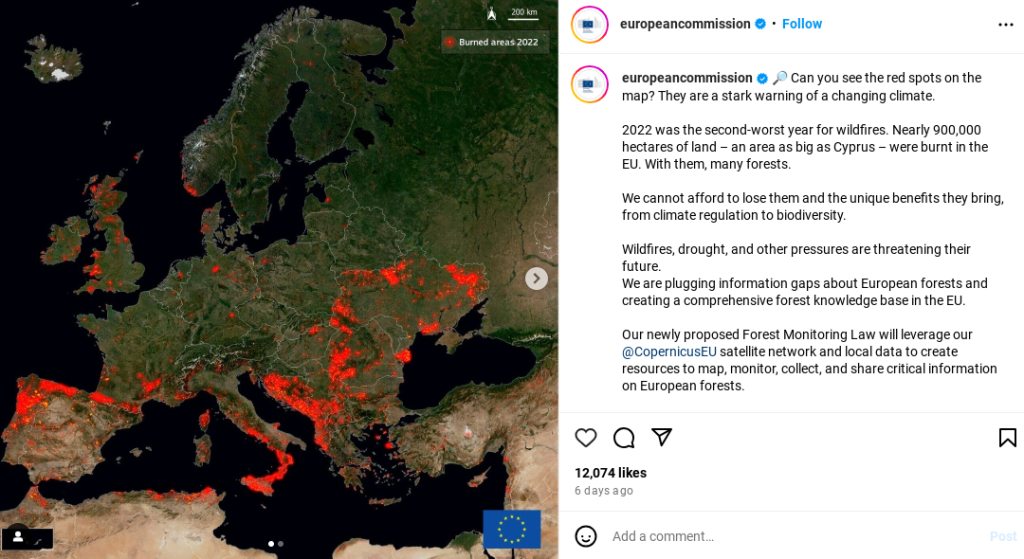November the 30th, 2023 – The European Commission (EC) recently published a climate change map. It will stand out to most immediately that a large part of Croatia is highlighted in red.
As Poslovni Dnevnik writes, in line with the overall strategy to become carbon neutral and to promote sustainable energy in every possible sense, the EC wants to warn the wider public about climate change with an interesting map.
The red areas on this particular map show the burned areas from back in 2022. Almost half of Croatia is covered in red, especially Dalmatia and its hinterland. This deep red is also spread deeper into the country’s interior, roughly from Dalmatia all the way to Karlovac. To a lesser extent, there are also red markings on the coast of the Istrian peninsula.
A warning to Croatia?

“Can you see the red spots on the map? They are a stark warning of a changing climate,” writes the European Commission on Instagram, strangely not specify the exact data on which this map was actually created.
”2022 was the second-worst year for wildfires. Nearly 900,000 hectares of land – an area as big as Cyprus – were burnt in the EU. With them, many forests.
We cannot afford to lose them and the unique benefits they bring, from climate regulation to biodiversity.
Wildfires, drought, and other pressures are threatening their future. We are plugging information gaps about European forests and creating a comprehensive forest knowledge base in the EU.” writes the EC on its Instagram post, which can be seen here.
Wildfires in Croatia, particularly in Dalmatia, are a frighteningly common occurrence during the scorching summer months. A shard of glass under the sun or a cigarette butt carelessly thrown into the tinder dry shrubbery are all it takes to cause insurmountable damage in summer in Dalmatia.
Here are how some of the most horrendous fires in Croatia actually started. It’s worth noting that most of them, if not all, were entirely preventable.











